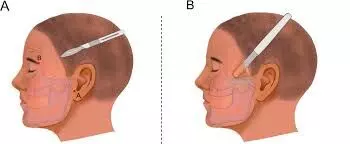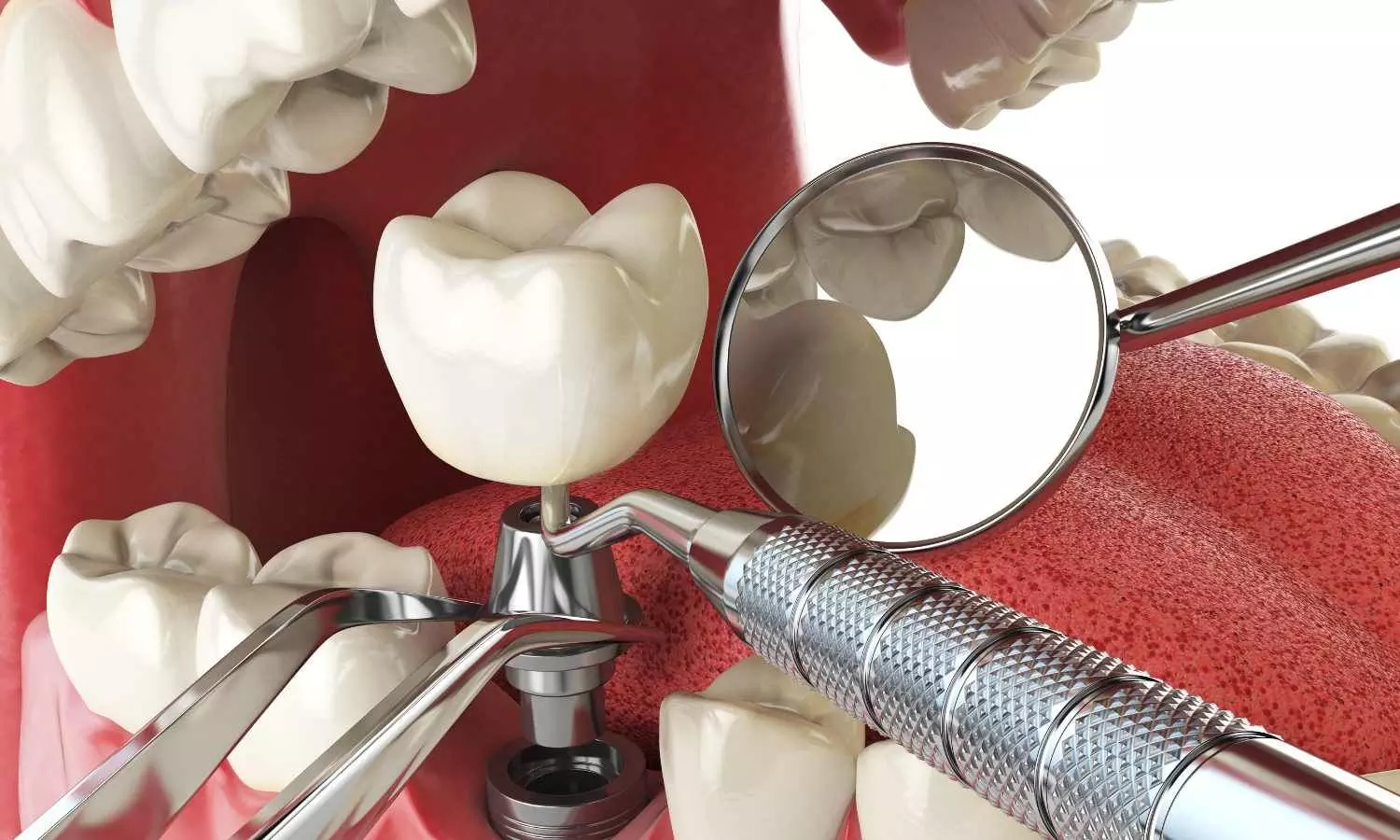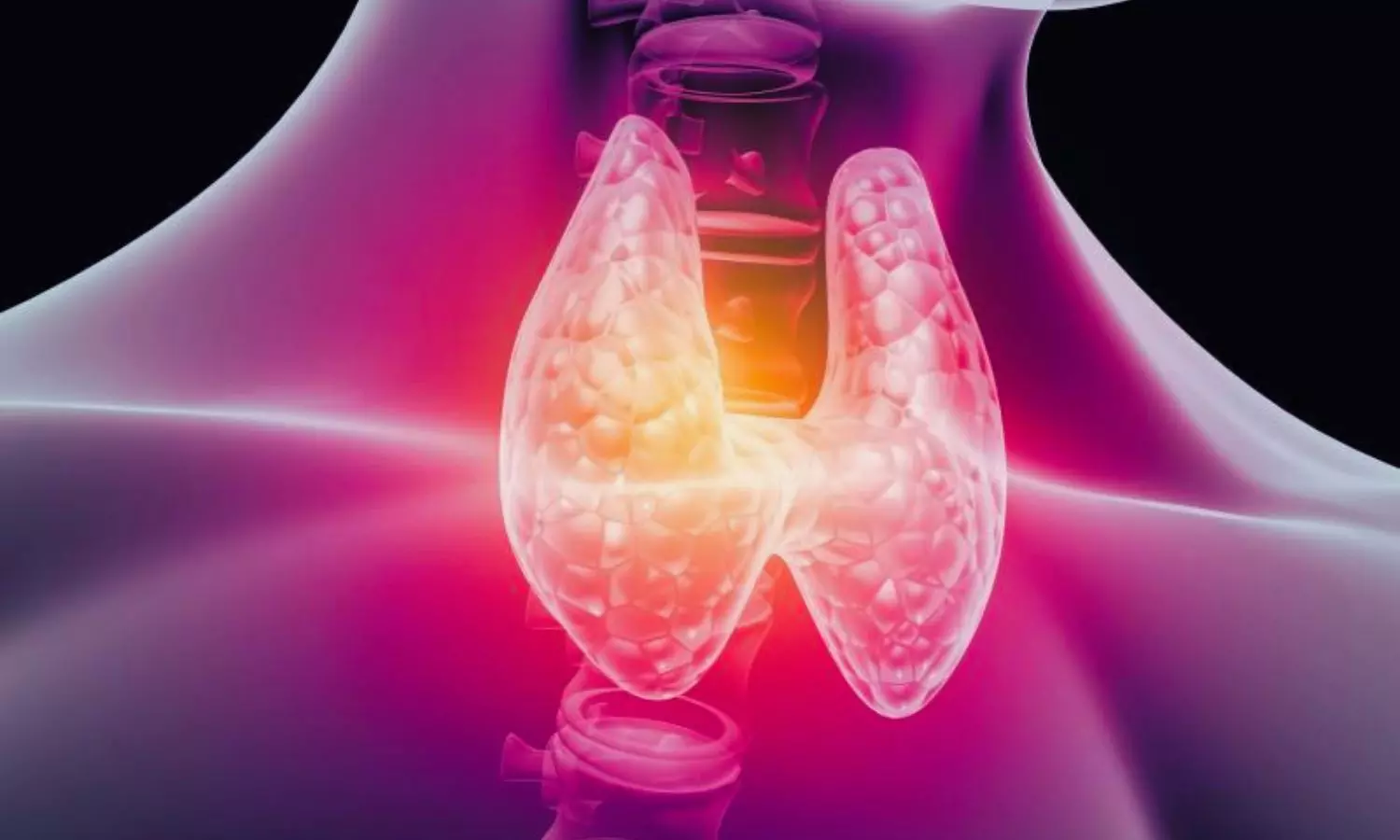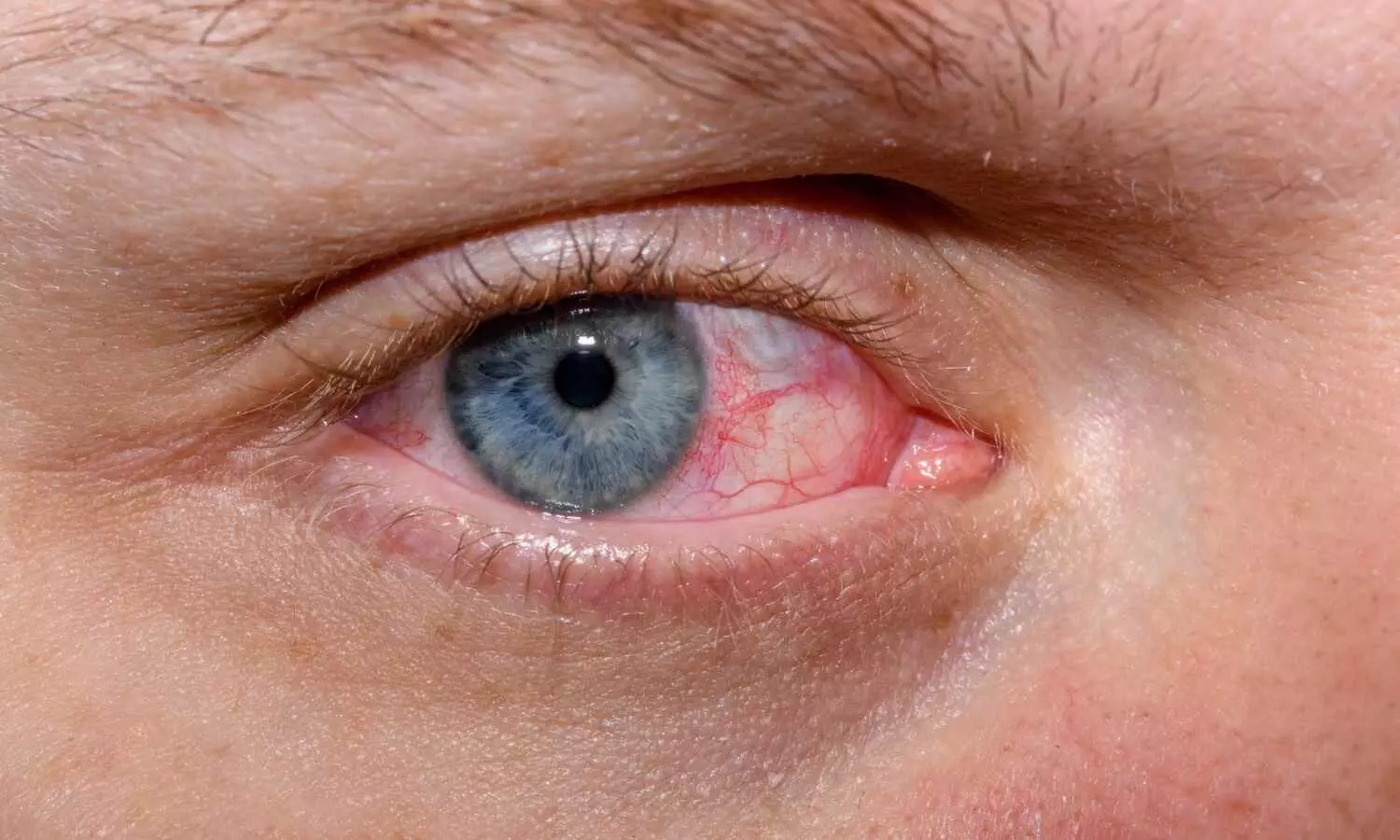Breast cancer death rates will rise in elderly EU patients but fall for all other ages, experts predict
Powered by WPeMatico
Powered by WPeMatico

Researchers have found in a new research that modified temporal hairline approach reduces the risk of temporal branch of the facial nerve (TBFN) injury while leaving minimal scarring. This technique provides a safe and effective surgical option for osteosynthesis of zygomatic arch fractures.
Zygomatic complex fractures are prevalent among maxillofacial bone injuries due to the prominence of the zygomatic arch, which can significantly impact facial aesthetics and the ability to open the mouth. Although non-surgical interventions are available for mild cases, severe fractures necessitate surgical intervention. The surgical repair of zygomatic arch fractures poses a risk of injuring the temporal branch of the facial nerve (TBFN). This study aimed to develop a modern modification to reduce the probability of common complications. They conducted a retrospective study involving 163 patients at the Department of Oral & Maxillofacial Surgery, West China Hospital of Stomatology, Sichuan University, spanning from March 2021 to June 2024. Our study introduced a novel modification of the temporal hairline approach for the treatment of these fractures. Results: Among the patients who underwent the modified approach (n = 38), there were no instances of TBFN injuries. In contrast, the traditional approach (n = 125) resulted in 17 cases of nerve-related complications. The findings indicate that the modified temporal hairline approach offers distinct advantages in minimizing the risk of TBFN injury with minimally noticeable scarring, while ensuring that the fracture is securely repaired. This provides a new safe surgical approach option for the osteosynthesis of zygomatic arch fractures.
Reference:
Tang, Zh., Jiang, Y., Liu, H. et al. A modified approach for treating zygomatic arch fracture with plate fixation: a retrospective study. BMC Surg 25, 79 (2025). https://doi.org/10.1186/s12893-025-02818-8
Keywords:
Modified, Temporal, Hairline, Approach, Enhances, Zygomatic Arch, Fracture Repair, reports, research, Tang, Zh., Jiang, Y., Liu, H, Maxillofacial injuries, Facial nerve injuries ,Fracture fixation, internal, Minimal surgical procedure
Powered by WPeMatico

Indonesia: A recent study published in the International Journal of Women’s Health has revealed a significant correlation between calcium and hemoglobin levels in pregnant women at 35 weeks or later and the anthropometric measurements of their newborns.
The researchers revealed that lower calcium levels (mean: 2.19 mmol/L) and hemoglobin levels (mean: 11.55 g/dL) in pregnant women during the third trimester were linked to shorter newborns, with low hemoglobin levels also being associated with lower birth weight. They observed a positive correlation between maternal calcium and hemoglobin levels and newborn length and weight, highlighting the crucial role of sufficient calcium and iron intake during pregnancy.
Calcium and hemoglobin are vital for fetal growth and development, with calcium supporting bone formation, muscle function, and overall development, while hemoglobin ensures proper oxygen transport to the fetus. Deficiencies in these nutrients during pregnancy can lead to complications, impacting maternal health and fetal growth.
Given the potential consequences of calcium and iron deficiency anemia, including low birth length and weight, Chatrine Aprilia Hendraswari, Program Study of Midwifery, Faculty of Medicine, Universitas Padjadjaran, Bandung, Indonesia, and colleagues aimed to explore the correlation between maternal calcium and hemoglobin levels in the third trimester and the anthropometric measurements of newborns.
For this purpose, the researchers conducted a prospective cohort study involving 120 third-trimester pregnant women at ≥35 weeks and their full-term newborns, selected through convenience sampling. The study was conducted between March and May 2024. Maternal calcium levels and complete blood count tests were assessed, while newborn anthropometric measurements, including birth length and birth weight, were recorded. The collected data were analyzed using univariate, bivariate, and multivariate statistical methods to examine the correlations.
The study revealed the following findings:
The researchers highlight that low calcium and hemoglobin levels in third-trimester pregnant women are linked to shorter newborn length, while low hemoglobin levels are also associated with lower birth weight. Ensuring adequate calcium and iron intake is crucial, with a focus on natural food sources before considering supplements. However, the study had limitations, as it did not assess maternal calcium and iron intake during pregnancy or track changes in these levels over time.
The researchers recommend larger, more comprehensive studies that evaluate both maternal and newborn calcium and hemoglobin levels to strengthen the findings and improve clinical insights.
Reference:
Hendraswari CA, Pramatirta AY, Susiarno H, Hilmanto D, Zuhairini Y, Sahiratmadja E. The Correlation of Calcium and Hemoglobin Level Among Pregnant Women in ≥35 Weeks with the Anthropometry of Newborn Babies. Int J Womens Health. 2025;17:507-515
https://doi.org/10.2147/IJWH.S491476
Powered by WPeMatico

Dental implants used to replace single teeth continue to function well after several decades, according to a study from the University of Gothenburg, Sweden. After nearly forty years, all examined implants were still in place and fully functional.
The study is the longest follow-up study of single dental implants in the world and is based on a follow-up of a small group of patients who received single implants to replace missing teeth between 1982 and 1985.
The implants are a result of research conducted by Professor Per-Ingvar Brånemark at the University of Gothenburg. His discovery of how bone integrates with titanium implants has enabled millions of patients to replace lost teeth with a reliable and long-lasting solution.
Of the 16 patients who received implants during the study period, 13 participated in the follow-up, conducted at the Brånemark Clinic, Public Dental Service Västra Götaland. These 13 patients had a total of 18 implants.
“It is impressive that the single implants function so well after such a long time. Even though the study included a small number of patients, the results show that the implants remain in place and that the bone loss around them is virtually unchanged after forty years. This confirms that the foundation Brånemark established still holds,” says Sargon Barkarmo, prosthodontist and senior lecturer at the University of Gothenburg.
A dental implant is an artificial tooth root made of titanium that is surgically placed into the jawbone, where it integrates and becomes stable. A crown is then attached to the implant, providing both functionality and aesthetics.
The crowns placed on the implants had a shorter lifespan than the implants themselves. At the forty-year follow-up, only about 60 percent of the original crowns remained, with many having been replaced one or more times.
“The study shows that the crowns were mostly replaced for aesthetic reasons rather than technical failures. In the future, implant treatments could be further improved with the development of new crown materials,” says Jan Kowar, prosthodontist and senior lecturer at the University of Gothenburg, and co-author of the study.
The researchers point out that older implant systems, which have been shown to be highly effective, are unfortunately no longer available on the market. This is due to the continuous introduction of new systems that quickly replace older ones, despite their proven long-term success.
The study concludes that implants placed using well-planned surgical techniques and given sufficient healing time have an excellent long-term prognosis. Sargon Barkarmo again:
“Today, methods that accelerate treatment and healing are commonly used. These approaches also need long-term follow-ups and careful evaluation to ensure equally good results over time,” he says.
Reference:
Sargon Barkarmo, Jan Kowar, Outcome of Single Dental Implants Over 38–40 Years: A Long-Term Follow-Up Study, Clinical Implant Dentistry and Related Research, https://doi.org/10.1111/cid.13443
Powered by WPeMatico

China: A recent retrospective study has highlighted a significant association between thyroid hormone sensitivity and the risk of developing non-alcoholic fatty liver disease (NAFLD) as well as its progression to liver fibrosis in euthyroid adults. The study found that euthyroid adults with NAFLD exhibited elevated free triiodothyronine (FT3) and free thyroxine (FT4) levels, along with lower thyroid-stimulating hormone and reduced hormone sensitivity.
“A higher FT3/FT4 ratio was associated with an increased risk of developing NAFLD (OR 1.45) and greater severity of liver fibrosis (ORs 3.21–10.80), highlighting the potential role of thyroid hormones in the progression of NAFLD,” the researchers reported in Diabetes, Metabolic Syndrome and Obesity.
The researchers note that non-alcoholic fatty liver disease is the most prevalent chronic liver disorder, often linked to metabolic conditions like obesity and diabetes. Research suggests thyroid hormone resistance may play a role in NAFLD progression. Recent studies highlight associations between thyroid sensitivity indices, NAFLD risk, and advanced liver fibrosis in euthyroid individuals.
Against the above background, Liyuan Zhou, Department of Endocrinology, Beijing Chao-Yang Hospital, Capital Medical University, Beijing, People’s Republic of China, and colleagues aimed to explore the relationship between thyroid hormone sensitivity, NAFLD risk, and the progression of liver fibrosis in euthyroid individuals.
For this purpose, the researchers recruited 29,386 adult participants from the medical examination center of Beijing Chao-Yang Hospital. They assessed thyroid hormone sensitivity using various indices, including FT3/FT4 ratio, TFQIFT4, TFQIFT3, TSHI, TT4RI, and TT3RI. Logistic regression analysis examined the association between these indices and NAFLD risk, along with related metabolic disorders. Additionally, ordinal logistic regression was employed to evaluate the correlation between thyroid hormone sensitivity and liver fibrosis severity using noninvasive fibrosis indices.
The key findings of the study were as follows:
“Reduced central sensitivity to FT3 and elevated FT3/FT4 levels were associated with a higher risk of NAFLD and related metabolic disorders. Moreover, higher FT3/FT4 was linked to increased liver fibrosis severity in NAFLD patients. These thyroid hormone sensitivity indices may aid in assessing and monitoring NAFLD risk and fibrosis progression,” the researchers concluded.
Reference:
Zhou L, Jiang L, An Y, Liu J, Wang G, Wang Y, Yang N. Association of Sensitivity to Thyroid Hormones and Non-Alcoholic Fatty Liver Disease and the Severity of Liver Fibrosis in Euthyroid Adults: A Retrospective Study. Diabetes Metab Syndr Obes. 2025;18:479-490. https://doi.org/10.2147/DMSO.S499517
Powered by WPeMatico

In a new study, published in Scientific Reports, a research team led by Dr Keita Kanamori, a graduate student and Professor Chiharu Ota, from the Department of Development and Environmental Medicine, found that children who started childcare when they were six months old exhibited improved development by the age of three compared with children raised at home.
Improvements were across five areas: communication, gross motor skills, fine motor skills, problem-solving, and personal-social skills.
They analysed data from approximately 40,000 participants in the government-administered Japan Environment and Children’s Study (JECS), the large-scale birth cohort study in Japan, where child-rearing values differ from those of Western countries.
The JECS, which enrolled participants between 2011 and 2014, followed 100,000 mother-child pairs across Japan to identify the impact of environmental factors on the children’s health and development.
The biggest developmental gaps between these toddlers and those raised at home were in communication and personal-social skills.
The toddlers in early childcare also had better motor skills — the ability to control and coordinate their movements.
The authors speculated that this may stem from more time spent playing with others.
Though these results suggest that early childcare could result in improved development, the researchers pointed out that only a small percentage of children raised at home fell below the standard developmental cutoff values.
Both home- and childcare- based child rearing have a myriad of benefits, they say, and they hope their research will dispel the myth that staying home with the mother until the age of three is essential for healthy development.
“Our key message is that both childcare facilities and home-based child-rearing are viable options, and families could choose what works best for them without guilt or anxiety,” says Ota.
Looking forward, the team plans to investigate how early childcare impacts children’s development beyond the age of three, as well as its impact on attachment formation and emotional development.
Reference: Keita Kanamori, Tomohisa Suzuki, Chiharu Ota, Michihiro Kamijima, Shin Yamazaki, Yukihiro Ohya, Reiko Kishi, Nobuo Yaegashi, Koichi Hashimoto, Chisato Mori, Shuichi Ito, Zentaro Yamagata, Hidekuni Inadera, Takeo Nakayama, Tomotaka Sobue, Masayuki Shima, Seiji Kageyama, Narufumi Suganuma, Shoichi Ohga, Takahiko Katoh. Group childcare has a positive impact on child development from the Japan Environment and Children’s Study. Scientific Reports, 2024; 14 (1) DOI: 10.1038/s41598-024-81343-9
Powered by WPeMatico

Recent study focused on identifying call-taker strategies to address callers’ perceptions of CPR ‘inappropriateness’ for patients with suspected out-of-hospital cardiac arrest. Call-takers play a crucial role in prompting callers to initiate and continue cardiopulmonary resuscitation (CPR). The research aimed to analyze interactions from call recordings and transcripts to understand how call-takers utilized linguistic features and strategies to overcome barriers to CPR initiation and continuation.
Linguistic Strategies in CPR Calls
Through a linguistic approach, the study analyzed 31 calls with identified inappropriateness barriers to CPR. Call-takers employed various strategies, including minimal tokens of alignment, deontics, and providing context or a rationale. The findings revealed that call-takers rarely used a single strategy in isolation but combined different features to successfully address callers’ perceptions of CPR inappropriateness. Overall, call-taker attempts were successful in overcoming 71% of initiation barriers and 88% of continuation barriers.
Utilization of Linguistic Features
The study highlighted that call-takers used a combination of linguistic features and strategies to address perceived inappropriateness to CPR. Minimal tokens for alignment, deontics, and providing context or rationale were the most commonly used approaches. Call-takers often employed a mix of strategies to persuade callers to initiate or continue CPR, emphasizing the importance of building rapport and providing reasons for CPR necessity.
Phases of the Study
Phase 1 of the study focused on coding call-taker strategies, identifying features like minimal/symbolic tokens for alignment and deontics. Phase 2 involved a discourse analysis of transcript extracts to examine the interactions between callers and call-takers in detail. The research emphasized the importance of integrating these identified techniques into call-taker training to improve patient outcomes post-cardiac arrest.
Collaborative Efforts and Communication Dynamics
In conclusion, the collaborative efforts between call-takers and callers to navigate barriers to CPR initiation and continuation were essential. By utilizing specific linguistic features and strategies, call-takers could effectively persuade callers to overcome perceived inappropriateness barriers to CPR. This study sheds light on the nuanced communication dynamics during emergency calls and underscores the significance of tailored training for call-takers to enhance their interactions with callers during CPR-related situations.
Key Points
– The study aimed to identify call-taker strategies addressing callers’ perceptions of CPR ‘inappropriateness’ for patients with suspected out-of-hospital cardiac arrest.
– Call-takers utilized linguistic features like minimal tokens of alignment, deontics, and providing context to overcome barriers to CPR initiation and continuation.
– Call-takers combined different strategies to successfully address callers’ perceptions of CPR inappropriateness, overcoming 71% of initiation barriers and 88% of continuation barriers.
– The research highlighted the importance of call-takers using a mix of linguistic features and strategies to persuade callers to initiate or continue CPR, emphasizing the need for building rapport and providing reasons for CPR necessity.
– The study had two phases: coding call-taker strategies in phase 1 and conducting a discourse analysis of transcript extracts in phase 2 to improve call-taker training and patient outcomes post-cardiac arrest.
– Collaborative efforts and effective communication dynamics between call-takers and callers were vital in navigating barriers to CPR initiation and continuation, emphasizing tailored training for call-takers to enhance interactions during CPR-related situations.
Reference –
Emogene S Aldridge et al. (2024). Breaking Down Barriers: Call-Taker Strategies To Address Caller Perception Of Inappropriateness Of Cardiopulmonary Resuscitation During The Emergency Ambulance Call.. *Resuscitation*, 110459. https://doi.org/10.1016/j.resuscitation.2024.110459
Powered by WPeMatico

A recent study published in the Nature Scientific Reports demonstrated that topical cyclosporin 0.1% is highly effective in managing ocular surface inflammation caused by allergies and blepharitis in pediatric patients. This finding offers a promising steroid-sparing treatment option for children with vernal and blepharitis-related keratoconjunctivitis, reducing the need for corticosteroids while improving both symptoms and clinical signs.
Ocular surface inflammation, when left untreated or poorly managed, can lead to serious complications, from corneal damage and potential visual impairment. The study assessed the effectiveness of cyclosporin 0.1% eye drops in reducing symptoms and signs of ocular inflammation while reducing the reliance on steroid treatments, which carry potential long-term side effects.
The study included 80 pediatric patients diagnosed with moderate to severe vernal and blepharitis-related keratoconjunctivitis. This research evaluated both subjective symptoms (photosensitivity, itching, discharge, and tearing) and objective clinical signs, including corneal fluorescein staining and papillary hypertrophy. The patients’ self-assessments of their condition were also recorded during a comprehensive 6-month follow-up.
The results revealed a marked improvement across all measures. By the end of the follow-up period, all patients treated with topical cyclosporin 0.1% experienced significant relief from symptoms and showed substantial improvements in clinical signs (p < 0.001). The use of rescue steroid treatments dropped dramatically. The average number of steroid courses decreased from 3.71 ± 1.72 before treatment to 0.25 ± 0.49 after 3 months and further declined to 0.13 ± 0.38 by month 6. This significant reduction (p < 0.001 at both time points) indicates that cyclosporin is effective in controlling inflammation and reducing flare-ups that would otherwise require steroid intervention.
Among the allergic group, 96.1% reported a “good” or “rapid and good” therapeutic response, while 96.4% of those with blepharitis-related keratoconjunctivitis shared similar positive outcomes. This high level of effectiveness underlined the potential cyclosporin as a first-line treatment for chronic ocular surface inflammation. A statistical analysis of the entire patient cohort revealed that the likelihood of requiring rescue steroids increased with greater disease severity, as indicated by the Oxford score.
Also, for each unit increase in the Oxford grading scale the odds of needing steroid intervention rose by 1.98 times (95% Confidence Interval: 1.19–3.28, p = 0.008). This finding emphasized the importance of early and aggressive management with cyclosporin to prevent disease progression and reduce dependency on corticosteroids. Overall, topical cyclosporin 0.1% appears to be a safe and effective therapeutic option for pediatric patients with ocular surface inflammation due to allergies and blepharitis.
Source:
Barcsay-Veres, A., Csorba, A., Kovacs, I., Tothfalusi, L., & Maneschg, O. A. (2025). Corticosteroid-sparing topical treatment with cyclosporin for juvenile keratoconjunctivitis. Scientific Reports, 15(1). https://doi.org/10.1038/s41598-025-85256-z
Powered by WPeMatico

A new study published in the journal of Rheumatology showed that kidney cancer is more common in people with rheumatoid arthritis (RA) than in people without the disease.
Rheumatoid arthritis causes significant comorbidities and mortality by affecting several organ systems, like the respiratory, musculoskeletal, and cardiovascular systems, as well as by being linked to certain psychiatric issues. Major risk factors for morbidity and death include chronic organ deterioration and late consequences including cancer and cardiovascular disease.
While some research has shown that the frequency of malignant illnesses in RA patients is comparable to that of the general population, other publications have shown that RA patients have a decreased risk of developing malignant diseases. The majority of research has consistently shown that people with RA had a higher risk of lymphoma and a lower incidence of colorectal cancer.
The association between RA and cancer has seldom ever been shown in Asian nations due to the very low frequency of RA in these populations. Uncertainty surrounds the pathogenetic processes of the relationship between cancer and RA. Dagyeong Lee and colleagues wanted to look at the possible links between RA and a higher risk of urological malignancies, particularly those of the kidney, bladder, prostate, and testicles, as well as the impact of RA serological status on this risk.
The Korean National Health Insurance System database (2010–2020) provided the data for this retrospective cohort analysis, which included RA patients and a 1:5 matched non-RA group. Serological status was used to categorize RA patients. After controlling for possible confounders, Cox proportional hazards regression models were used to examine the relationship between newly diagnosed urological cancer and RA.
The study found the RA patients to have an increased risk of kidney cancer when compared with the non-RA population. The risk of kidney cancer was even higher in women with RA. However, the risk of bladder, prostate and testicular cancers was not associated with RA.
No significant difference in urological cancer risk was found according to serological status. When compared to the general population, RA patients are more likely to develop kidney cancer. Overall, kidney cancer risk was 34% higher in RA patients, and the risk was higher in women. Yet, no such correlation was discovered for testicular, bladder, or prostate cancers which highlights the need of cancer preventive measures in RA.
Source:
Lee, D., Jeon, K. H., Jung, J., Han, K., Cho, M. H., Cho, I. Y., & Shin, D. W. (2025). Urological cancer risk in patients with rheumatoid arthritis compared to matched controls: A nationwide cohort study. Rheumatology (Oxford, England). https://doi.org/10.1093/rheumatology/keaf103
Powered by WPeMatico

According to PROMIS-I data published in the journal of The Lancet Respiratory Medicine showed that individuals with bronchiectasis and Pseudomonas aeruginosa infections may benefit clinically from colistimethate sodium administered via the I-neb adaptive aerosol delivery system. As a result of compromised mucociliary clearance and compromised host immunity, patients with bronchiectasis experience a persistent infection of the airways. An elevated risk of exacerbation and higher airway inflammation are linked to an increased bacterial load in the airway. One of the top priorities in treating people with bronchiectasis is preventing exacerbations.
The most frequent infection found in the airways of bronchiectasis patients is P. aeruginosa. More airway inflammation, more severe symptoms and lung function, an accelerated decline in lung function, more bronchiectasis exacerbations, a higher risk of hospitalization, and a higher mortality rate are all linked to the presence of P. aeruginosa in sputum. Thus, this study examined the safety and effectiveness of inhaling colistimethate sodium for 12 months using the I-neb.
The study involved the trials of twice-daily colistimethate sodium against placebo in hospitals in Argentina, Belgium, Australia, Canada, Germany, France, Greece, Italy, Israel, Netherlands, Poland, New Zealand, Portugal, Switzerland, Spain, the UK and the USA. Individuals with bronchiectasis with P. aeruginosa and a record of at least two exacerbations that require oral antibiotics or one requiring IV antibiotics in the past year were enrolled. Using an interactive online response system, the randomization was carried out and stratified by place and duration of macrolide consumption.
In the PROMIS-I study, a total of 377 patients were randomized at random between June 6, 2017 and April 8, 2020. The colistimethate sodium group experienced a yearly exacerbation rate of 0·58, whereas the placebo group experienced an exacerbation rate of 0·95. In PROMIS-II, 287 patients were randomized at random between February 12, 2018 and October 22, 2021. The effects of COVID-19 pandemic led to the early termination of PROMIS-II. The yearly exacerbation rate did not differ significantly between the colistimethate sodium and placebo groups. Overall, 142 patients experienced adverse events in the colistimethate sodium group when compared to 159 in the placebo group in PROMIS-I, and 123 patients experienced adverse events when compared to 104 in PROMIS-II.
Source:
Haworth, C. S., Shteinberg, M., Winthrop, K., Barker, A., Blasi, F., Dimakou, K., Morgan, L. C., O’Donnell, A. E., Ringshausen, F. C., Sibila, O., Thomson, R. M., Carroll, K. J., Pontenani, F., Castellani, P., & Chalmers, J. D. (2024). Inhaled colistimethate sodium in patients with bronchiectasis and Pseudomonas aeruginosa infection: results of PROMIS-I and PROMIS-II, two randomised, double-blind, placebo-controlled phase 3 trials assessing safety and efficacy over 12 months. In The Lancet Respiratory Medicine (Vol. 12, Issue 10, pp. 787–798). Elsevier BV. https://doi.org/10.1016/s2213-2600(24)00225-x
Powered by WPeMatico
